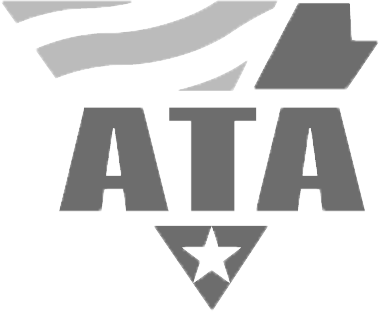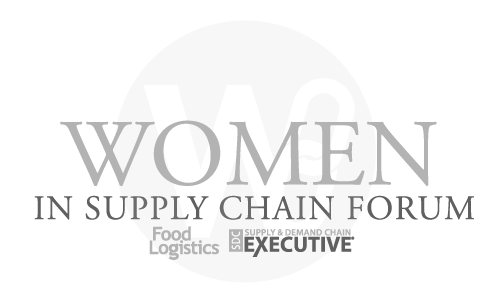Defining the Trucking Asset Brokerage Hybrid Model
In the complex landscape of modern logistics, businesses are constantly seeking strategies to optimize their supply chains, enhance efficiency, and build resilience against market fluctuations. One increasingly popular and effective approach gaining traction is the adoption of the Trucking Asset Brokerage Hybrid Model. This model represents a strategic fusion, combining the operational control and reliability inherent in owning a fleet of trucks and trailers (the asset-based component) with the extensive network reach and flexibility offered by partnering with external carriers (the brokerage component).
Historically, trucking companies have typically fallen into one of two distinct categories: purely asset-based carriers or non-asset-based brokers. Asset-based carriers own and maintain their own equipment and employ their own drivers. This provides maximum control over scheduling, equipment condition, and service quality. However, it also comes with significant fixed costs, including vehicle acquisition and maintenance, driver wages, insurance, and facility overhead. Scaling up quickly during peak demand can be challenging and capital-intensive, and scaling down during slow periods can lead to underutilized assets and financial strain.
Conversely, non-asset-based brokers primarily act as intermediaries. They connect shippers with carriers who have available capacity. This model offers immense flexibility and scalability, as brokers can tap into a vast network of carriers to cover loads across diverse lanes and volumes. Fixed costs are significantly lower compared to asset-based operations. However, brokers have less direct control over the actual execution of the transportation service, relying on the performance and reliability of their partner carriers. Maintaining consistent service quality can be more challenging, and access to capacity can become difficult and expensive during market surges.
The Trucking Asset Brokerage Hybrid Model seeks to harness the strengths of both traditional models while mitigating their respective weaknesses. By maintaining a core fleet of owned assets, a hybrid provider ensures a foundational level of dependable capacity, particularly for critical lanes, dedicated routes, or high-value freight requiring specialized equipment or handling. This asset base provides stability, control, and a consistent service standard that purely brokerage models may struggle to guarantee.
Simultaneously, the brokerage arm allows the hybrid provider to extend its reach far beyond the limitations of its owned fleet. When owned assets are fully utilized, when a load requires a specific equipment type not in the core fleet, or when serving lanes where owned assets aren’t positioned efficiently, the brokerage network can be leveraged. This enables the provider to handle fluctuating volumes, cover broader geographic areas, and offer a wider range of services without the capital investment and operational complexity of constantly expanding a private fleet.
In essence, the hybrid model creates a more dynamic and adaptable transportation solution. It provides shippers with the peace of mind that comes from working with a company that understands the operational realities of hauling freight (gained from managing its own fleet) while also offering the agility and expansive capacity access typically associated with brokerage. This blend allows for tailored solutions that can evolve with a shipper’s changing needs and the unpredictable nature of the freight market. It’s a strategy focused on building long-term partnerships by offering a more complete and resilient service portfolio than either traditional model can provide in isolation.
Key Advantages of the Trucking Asset Brokerage Hybrid Model
Adopting a Trucking Asset Brokerage Hybrid Model offers a multitude of benefits that address some of the most persistent challenges in the logistics sector. These advantages extend to both the logistics provider and, crucially, their shipping partners. Let’s explore some of the primary benefits that make this model an increasingly attractive option in today’s competitive market.
One of the most significant advantages is the inherent ability to provide a higher level of service reliability. With owned assets, a hybrid carrier maintains direct control over the condition and availability of equipment, the training and management of drivers, and the adherence to specific protocols (like safety procedures or handling instructions). This direct control minimizes many of the variables that can lead to service failures, such as equipment breakdowns, driver issues, or miscommunication that can occur when relying solely on third-party carriers. For critical shipments or dedicated operations, this reliability is paramount.
Furthermore, the hybrid model offers enhanced capacity management. A purely asset-based carrier might struggle to find equipment during peak seasons or unexpected demand spikes. A purely brokerage model might face inflated prices and reduced availability in the same scenarios. The hybrid approach allows a provider to prioritize its owned assets for stable, high-volume lanes or critical customer needs, while simultaneously leveraging its brokerage network to cover overflow, handle seasonal peaks, or access capacity in specific, less frequently served regions. This blended approach ensures a higher probability of securing the necessary capacity when and where it’s needed, providing shippers with greater confidence in their ability to move goods consistently.
Cost optimization is another critical benefit. For lanes with consistent volume and predictable schedules, utilizing owned assets is often more cost-effective in the long run due to greater operational efficiency and the avoidance of broker margins. However, for sporadic shipments, new lanes, or situations requiring specialized carriers, the brokerage arm can source competitive rates and access capacity that might be prohibitively expensive or unavailable through the asset base alone. This ability to strategically deploy owned assets or utilize the broader market allows the hybrid provider to optimize costs across the entire transportation network, potentially leading to more favorable pricing structures for shippers.
The hybrid model also fosters greater flexibility and scalability. As a shipper’s needs change – perhaps increasing volume, expanding into new territories, or requiring different equipment types – a hybrid provider can adapt more readily. They aren’t limited by the size or type of their owned fleet. The brokerage network acts as a flexible extension, capable of quickly sourcing the right capacity for evolving requirements. This adaptability is particularly valuable in dynamic industries or during periods of rapid business growth or contraction.
Finally, the blend of asset ownership and brokerage provides valuable market insights. Managing both operations gives a hybrid provider a unique perspective on market conditions, freight rates, and capacity trends. They understand the true costs and operational complexities of hauling freight (from the asset side) while also having real-time visibility into available capacity and pricing in the broader market (from the brokerage side). This comprehensive understanding allows them to provide more informed recommendations to shippers and build more resilient and cost-effective supply chain solutions. The combination of operational experience and market intelligence positions the Trucking Asset Brokerage Hybrid Model as a robust solution for navigating the complexities of modern transportation.
Enhancing Flexibility and Scalability in Operations
One of the core pillars of the Trucking Asset Brokerage Hybrid Model‘s value proposition is its unparalleled ability to enhance operational flexibility and scalability. In a business environment characterized by fluctuating demand, evolving market conditions, and unexpected disruptions, the capacity to adapt quickly and efficiently is not just an advantage – it’s a necessity.
Let’s consider the challenges faced by a purely asset-based carrier when confronted with a sudden surge in demand. To meet this increased volume, they would typically need to acquire more trucks and trailers and hire more drivers. This process is capital-intensive, time-consuming, and comes with the risk of overcapacity if the demand increase proves temporary. Conversely, during a market slowdown, these assets become underutilized, resulting in significant financial burden from fixed costs like loan payments, insurance, and maintenance.
A purely brokerage firm, while inherently flexible, might face challenges securing capacity during peak demand or in specific, less common lanes. They are entirely reliant on the availability and pricing of external carriers, which can become problematic when the market is tight. Rates can skyrocket, and finding reliable carriers can be difficult, potentially leading to service failures or delays for the shipper.
The hybrid model seamlessly bridges these gaps. The owned fleet provides a stable, reliable base to cover consistent volumes and key lanes. This portion of the operation benefits from the efficiencies and cost controls associated with managing dedicated assets and drivers. For instance, a company with a focus on safety and driver well-being, as highlighted in resources like Apex Transit credits growth to a focus on drivers and a commitment to safety, can ensure their core asset operations uphold these high standards.
When demand exceeds the capacity of the owned fleet, the brokerage arm swings into action. The hybrid provider can quickly tap into its network of vetted carriers to secure additional capacity. This allows them to scale up operations to meet the increased demand without the long-term commitment and capital expenditure of acquiring new assets. This is particularly useful for:
- Handling seasonal peaks (e.g., holiday shopping, agricultural harvests).
- Covering one-off or project-based shipments.
- Servicing new or infrequently used lanes.
- Providing alternative solutions when owned equipment is undergoing maintenance or is otherwise unavailable.
Similarly, during periods of reduced demand, the hybrid provider can scale down the use of brokered capacity while keeping their core asset base optimally utilized on essential routes. This minimizes the impact of market downturns on the fixed cost structure, maintaining financial stability. This agile response to market conditions protects both the provider and the shipper from the negative consequences of rigid capacity structures.
Furthermore, the hybrid model enhances flexibility in terms of equipment types and specialized services. While an owned fleet might consist primarily of standard dry vans, the brokerage network can provide access to flatbeds, refrigerated trailers, specialized heavy-haul equipment, or other niche capabilities that the owned fleet doesn’t possess. This means a hybrid provider can act as a single point of contact for a shipper with diverse transportation needs, simplifying logistics management.
In essence, the Trucking Asset Brokerage Hybrid Model creates a dynamic capacity pool. The owned assets represent a reliable anchor, providing stability and control, while the brokerage network functions as a flexible reservoir, ready to expand or contract based on real-time needs. This inherent flexibility and scalability are vital for businesses operating in volatile markets, allowing them to respond effectively to changing demands, manage costs efficiently, and maintain a high level of service regardless of external circumstances.
Optimizing Costs Through a Balanced Approach
Cost management is a perpetual concern in the trucking industry, directly impacting profitability for carriers and freight expenses for shippers. The Trucking Asset Brokerage Hybrid Model offers a nuanced approach to cost optimization, leveraging the distinct financial characteristics of both asset-based and brokerage operations to achieve overall efficiency.
Owned assets come with significant fixed costs: truck and trailer payments (or depreciation), insurance, driver wages and benefits, maintenance, and facility overhead. These costs are incurred regardless of whether the equipment is moving freight or sitting idle. However, when assets are consistently utilized on dedicated lanes or high-volume routes, the variable cost per mile (fuel, tires, maintenance) can be lower than the cost of brokering the same load, especially during periods of tight capacity in the market.
The advantage of owned assets for cost optimization lies in predictability and operational control. By managing their own fleet, hybrid carriers can implement fuel efficiency programs, optimize maintenance schedules to prevent costly breakdowns, manage driver hours effectively to maximize utilization within regulations, and plan routes to minimize empty miles (deadheading). This granular control over operations directly impacts costs and allows for more stable pricing on consistent freight.
On the other hand, brokerage costs are primarily variable. The cost of moving a load through a broker is the negotiated rate paid to the third-party carrier, plus the broker’s margin. This means that when demand is low and capacity is abundant, brokered rates can be highly competitive, sometimes lower than the total cost (fixed + variable) of running an owned asset on that particular lane. The brokerage model allows the hybrid provider to access capacity at market-driven rates without the burden of fixed costs associated with owning the underlying assets.
The cost optimization in a Trucking Asset Brokerage Hybrid Model comes from strategically deciding which loads are best suited for owned assets and which should be brokered.
| Consideration | Favors Owned Assets | Favors Brokerage |
|---|---|---|
| Lane Consistency | High volume, predictable routes | Sporadic, inconsistent lanes |
| Volume Fluctuation | Stable, baseline volume | Seasonal peaks, unexpected surges/drops |
| Specialized Needs | Consistent need for specific equipment (if owned) | Infrequent need for specialized equipment not in fleet |
| Geographic Reach | Areas near core operational hubs | Distant or niche markets |
| Service Control | Requires maximum control over transit/handling | Standard service requirements |
By using owned assets for the most cost-effective and control-sensitive movements and leveraging the brokerage network for flexibility and market-driven pricing on variable or niche freight, a hybrid provider can achieve a lower overall transportation cost structure compared to relying on a single model. This balanced approach minimizes the risk of underutilized assets during slow times and avoids paying peak market premiums for capacity during surges. For instance, a hybrid provider might use their owned fleet for dedicated routes for key customers while using brokerage to cover spot market loads or expand into new regions. This dual capability ensures that freight is moved efficiently and cost-effectively regardless of market conditions or the specific requirements of a given load.
Furthermore, the insights gained from operating both sides of the business allow the hybrid provider to make more informed purchasing and operational decisions. They have a clearer understanding of the true cost of operating assets versus market rates, enabling them to negotiate better rates with partner carriers and optimize their owned fleet’s deployment. This strategic financial management is a significant differentiator of the Trucking Asset Brokerage Hybrid Model.
Improving Service Reliability and Capacity
In the world of logistics, reliability and consistent access to capacity are paramount for maintaining efficient supply chains and meeting customer expectations. The Trucking Asset Brokerage Hybrid Model is uniquely positioned to excel in both these areas by combining the inherent strengths of owned fleets with the expansive reach of a brokerage network.
The reliability component is heavily influenced by the asset-based side of the operation. When a logistics provider owns its trucks, trailers, and employs its drivers, it has direct control over the factors that impact on-time performance and freight integrity. This includes:
- Equipment Maintenance: Owned fleets typically adhere to strict preventative maintenance schedules. Having an on-site shop, as some hybrid carriers do, allows for proactive repairs and ensures that equipment is always in optimal condition, minimizing the risk of breakdowns that cause delays.
- Driver Management: Employing dedicated drivers allows for consistent training, adherence to safety protocols, and better communication. This leads to more predictable transit times and reduced risk of incidents.
- Operational Control: The carrier has full control over dispatching, route planning, and managing transit times, ensuring that loads are picked up and delivered according to schedule. This level of control is difficult to replicate when relying solely on external carriers.
This foundational reliability provided by the owned fleet is a key differentiator, especially for shippers whose supply chains depend on precise timing and predictable service.
However, even the most well-maintained fleet has limitations in terms of size, geographic coverage, and equipment types. This is where the brokerage component of the Trucking Asset Brokerage Hybrid Model becomes invaluable for enhancing capacity and maintaining reliability in dynamic situations.
The brokerage network allows the hybrid provider to access a vast pool of additional capacity whenever needed. This means they are not constrained by the number of trucks they own. If a key lane experiences a sudden spike in volume, if a customer needs service in a region outside the owned fleet’s primary operating area, or if specialized equipment is required, the brokerage arm can quickly source a qualified carrier from its network. This ensures that the hybrid provider can say yes to a wider range of requests and absorb volume fluctuations that would overwhelm a purely asset-based carrier.
Furthermore, the brokerage function can act as a crucial backup in unforeseen circumstances. If an owned truck experiences a breakdown or a driver issue, the hybrid provider can immediately tap into its brokerage network to find replacement capacity, minimizing delays and keeping the freight moving. This redundancy adds another layer of reliability that a purely asset-based carrier might lack.
The interplay between the two models is crucial. The asset side provides the benchmark for service quality and operational excellence, influencing the selection and management of partner carriers in the brokerage network. Hybrid providers understand what it takes to move freight reliably because they do it themselves. This operational knowledge informs their carrier vetting processes and allows them to build strong relationships with reliable external partners.
By strategically combining the controlled reliability of owned assets with the flexible, expansive capacity of a brokerage network, the Trucking Asset Brokerage Hybrid Model offers shippers the best of both worlds: consistent, high-quality service on core movements backed by the assurance of available capacity and backup options for less predictable or specialized needs. This dual capability is essential for building resilient supply chains that can withstand the challenges of today’s market.
Leveraging Technology in a Hybrid Framework
Technology plays a pivotal role in the successful operation of a Trucking Asset Brokerage Hybrid Model. Effectively managing both owned assets and a network of external carriers requires sophisticated systems that provide visibility, streamline communication, and optimize operations across the entire business. Without a robust technology infrastructure, attempting to run a hybrid model would be exponentially more complex and less efficient.
At the core of a technology-driven hybrid model is a powerful Transportation Management System (TMS). A comprehensive TMS is essential for handling the diverse functions of both asset-based and brokerage operations. It needs to be capable of:
- Managing owned fleet dispatch, driver logs, and equipment tracking.
- Facilitating load booking, carrier selection, and rate negotiation for brokered freight.
- Handling freight invoicing, payment processing, and settlement for both internal and external carriers.
- Providing real-time visibility into the status and location of all shipments, regardless of whether they are on an owned truck or a brokered one.
The TMS acts as the central nervous system, ensuring smooth workflow and data flow across the hybrid operation.
Beyond the TMS, other technologies are critical. Telematics and Electronic Logging Devices (ELDs), such as those offered by providers like Samsara, are fundamental for managing owned assets. They provide essential data on driver hours of service, vehicle performance, and location. Integrating this data into the TMS allows for efficient dispatching, proactive maintenance planning, and ensures regulatory compliance. For example, a provider using a telematics stack like Samsara ELD + LoadStop TMS with open-API GPS links, as mentioned in the company notes, can offer superior real-time visibility.
Visibility platforms are increasingly important in the Trucking Asset Brokerage Hybrid Model. While telematics covers the owned fleet, tracking brokered loads requires integration with external carrier systems or driver mobile applications. Advanced visibility platforms aggregate data from various sources – ELDs, carrier APIs, check calls – to provide a single, unified view of the entire supply chain. This allows the hybrid provider and their customers to know where every load is at any given time, regardless of the carrier transporting it. This transparency is vital for proactive problem-solving and managing customer expectations.
API (Application Programming Interface) capabilities are also key. The ability for the hybrid provider’s systems (TMS, visibility platform) to connect seamlessly with customer Enterprise Resource Planning (ERP) or Warehouse Management Systems (WMS) streamlines communication, automates data exchange, and provides customers with integrated tracking and reporting. This level of data-driven partnership is a significant differentiator in the market.
Freight matching and carrier management technology is crucial for the brokerage side. Systems that help identify available, qualified carriers, manage carrier profiles and compliance documentation, and facilitate efficient load tendering and booking are essential for quickly and effectively covering brokered freight. Using data analytics from both owned and brokered operations can inform carrier selection and performance management.
In summary, technology is not merely a supporting tool for the Trucking Asset Brokerage Hybrid Model; it is an enabler. Integrated systems for management, visibility, compliance, and communication are necessary to optimize the complex interplay between owned and external capacity. Leveraging cutting-edge technology allows hybrid providers to offer greater transparency, efficiency, reliability, and scalability, ultimately delivering superior value to their shipping partners in an increasingly digital logistics world.
Navigating Market Volatility with a Hybrid Strategy
The trucking industry is notoriously susceptible to market volatility. Economic cycles, seasonal demand shifts, fuel price fluctuations, regulatory changes, and unforeseen global events can all cause significant swings in freight volume and capacity availability. Operating solely as an asset-based carrier or a broker during these volatile periods presents unique challenges. The Trucking Asset Brokerage Hybrid Model, however, is inherently designed to help navigate these market dynamics more effectively.
Consider a period of high demand and tight capacity, often referred to as a seller’s market for carriers. In this environment, shippers struggle to find trucks, and freight rates soar.
- A purely asset-based carrier benefits from high rates but might have to turn away business if their fleet is fully booked. They cannot easily scale up to capture more of the lucrative market unless they make significant capital investments.
- A purely brokerage firm can potentially find capacity but may have to pay exceptionally high rates to secure it, squeezing their margins or forcing them to pass on steep price increases to shippers. Finding reliable carriers under pressure also becomes more difficult.
A hybrid provider in this scenario can strategically deploy their owned assets on their most profitable or critical lanes, ensuring stable capacity and service for key customers. For additional, higher-paying spot market loads or lanes where their assets aren’t positioned, they can leverage their brokerage network. While brokered rates will likely be high, the hybrid carrier’s operational knowledge from their asset base gives them insight into realistic pricing and helps them vet carriers who are more likely to perform reliably even under market pressure. They are not solely at the mercy of the spot market.
Now, consider a period of low demand and excess capacity, a buyer’s market for shippers. Freight volumes are down, and rates plummet as carriers compete fiercely for available loads.
- A purely asset-based carrier faces significant challenges. Their fixed costs (payments, insurance, drivers) remain high, but revenue declines due to lower rates and potentially reduced load volumes. They may have trucks sitting idle, leading to financial losses.
- A purely brokerage firm can capitalize on lower rates, potentially offering more competitive pricing to shippers. However, their reliance on external carriers means they still face competition on rates and must manage their carrier relationships carefully to maintain margins.
In this soft market, the hybrid provider can optimize the utilization of their owned assets by prioritizing dedicated contracts or consistent lanes where rates are more stable. For the remaining freight, they can utilize their brokerage arm to source capacity at lower market rates. This allows them to remain competitive on pricing while minimizing the number of owned assets sitting idle. They can reduce reliance on brokered capacity more easily than an asset carrier can shed fixed assets, providing greater financial flexibility. The ability to blend the stable, cost-controlled base of owned assets with the variable, market-responsive capacity of brokerage allows the hybrid model to cushion the financial impact of freight market cycles.
This strategic flexibility is a core strength of the Trucking Asset Brokerage Hybrid Model in navigating volatility. It allows providers to:
- Maintain service stability for core customers regardless of market swings.
- Capitalize on favorable market conditions using the most advantageous capacity (owned vs. brokered).
- Mitigate financial risk during downturns by flexing capacity downwards using the brokerage network.
- Offer shippers more stable and predictable pricing over the long term by balancing fixed and variable costs.
By not being entirely beholden to either the asset-heavy fixed cost structure or the purely variable, market-exposed brokerage model, hybrid providers can better adapt to, and thrive within, the cyclical nature of the trucking industry.
This resilience built into the Trucking Asset Brokerage Hybrid Model is increasingly important for businesses seeking reliable transportation partners in an unpredictable global economy. It offers a buffer against the sharp swings in capacity and pricing that characterize volatile freight markets.
Is the Hybrid Model Right for Your Trucking Business?
Adopting or transitioning to a Trucking Asset Brokerage Hybrid Model is a significant strategic decision for a trucking company. It’s not a one-size-fits-all solution, and the suitability of this model depends on a variety of factors related to the company’s size, capabilities, target market, and long-term goals. For carriers considering this path, or for shippers evaluating potential logistics partners, understanding these considerations is crucial.
For an existing asset-based carrier looking to add brokerage capabilities, the transition involves building a brokerage operation from the ground up. This requires:
- Developing a Carrier Network: Vetting, contracting, and managing relationships with a broad base of reliable external carriers.
- Implementing Technology: Investing in or upgrading TMS and other systems to handle brokerage workflows, carrier management, and freight matching.
- Building Expertise: Hiring or training staff with expertise in freight brokering, including sales, operations, and compliance related to brokered freight.
- Managing Risk: Understanding and mitigating the different types of risk associated with brokered loads compared to owned assets (e.g., contingent cargo insurance, carrier financial viability). Resources like As cargo theft continues to escalate, brokers require an easy-to-use solution to protect their shipments highlight risks that both brokers and asset carriers must address.
The advantage for an asset-based carrier making this shift is that they already possess operational knowledge and often have established relationships with shippers who might benefit from expanded service offerings.
For an existing brokerage firm looking to add asset-based capabilities, the transition is arguably even more capital-intensive and complex. It requires:
- Significant Capital Investment: Purchasing or leasing trucks and trailers, which involves substantial upfront costs and ongoing financial commitments.
- Operational Infrastructure: Setting up maintenance facilities, parking, and potentially terminals.
- Driver Recruiting and Management: Hiring, training, and retaining qualified drivers, a persistent challenge in the industry. Understanding the human aspect of truck driver recruiting is vital.
- Regulatory Compliance: Navigating the extensive regulations applicable to motor carriers (DOT, FMCSA, etc.), which differ from those for brokers.
The advantage for a brokerage firm making this shift is that they likely already have a strong sales force and established shipper relationships, providing a ready customer base for their new asset services.
Regardless of the starting point, successful implementation of the Trucking Asset Brokerage Hybrid Model relies on:
- Clear Strategic Vision: Defining how the two components will complement each other and create synergistic value.
- Integrated Operations: Ensuring seamless communication and workflow between the asset and brokerage teams.
- Robust Technology: Investing in systems that can effectively manage both sides of the business and provide unified visibility.
- Strong Leadership: Guiding the integration and ensuring the company culture embraces both asset-based and brokerage mindsets.
For shippers, evaluating a hybrid provider means looking beyond simply checking boxes for asset or brokerage. It involves understanding how well the two parts of their operation are integrated and how that integration translates into tangible benefits for your specific freight needs. Consider questions such as:
- How do they decide which loads go on owned vs. brokered equipment?
- What level of visibility do they provide across both types of moves?
- How do they manage service quality and carrier vetting in their brokerage network?
- How does their hybrid model help manage costs and capacity during market swings?
Ultimately, the hybrid model is best suited for companies committed to investing in both operational excellence (assets) and network flexibility (brokerage). It requires a willingness to navigate complexity for the sake of offering a more resilient, adaptable, and potentially more cost-effective solution to the market. For companies with the resources, expertise, and strategic focus, the Trucking Asset Brokerage Hybrid Model offers a powerful framework for long-term success in the dynamic transportation industry. It allows them to offer tailored solutions, from dedicated services with owned equipment to complex multimodal solutions leveraging brokered capacity, truly embodying the Move – Manage – Optimize philosophy.
Have questions? Contact us here.














